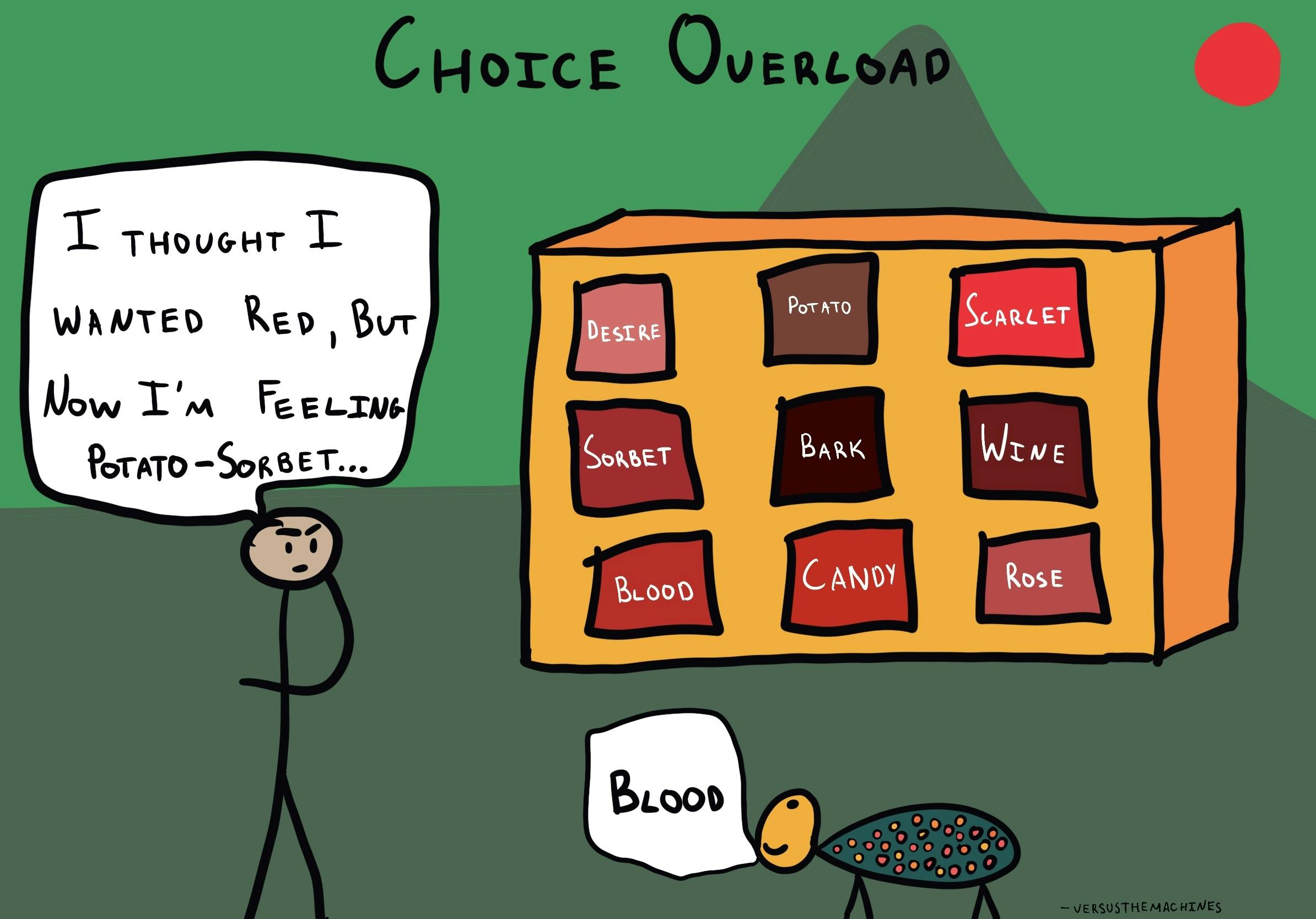¿Por qué nos cuesta más elegir cuando tenemos más opciones?
¿Qué es la sobrecarga de opciones?
La sobrecarga de opciones, también conocida como exceso de opciones, parálisis de la elección o paradoja de la elección, describe cómo las personas se sienten abrumadas cuando se les presenta un gran número de opciones entre las que elegir. Aunque tendemos a suponer que tener más opciones es bueno, en muchos casos las investigaciones han demostrado que nos cuesta más elegir entre un abanico más amplio de opciones.

Dónde se produce este sesgo
Imagina que es un día caluroso y decides entrar en una cafetería desconocida conocida como "Starbucks". Cuando te pones a la cola y miras los menús, te ves bombardeado por un montón de opciones. ¿Quieres un simple café helado o un Frappuccino? ¿De qué sabor? Pero espera, los Frappuccinos son muy caros, deberías pedir un té helado. Pero eso tiene menos cafeína y te dará menos energía. ¿Qué hacer? Cuando llegas al principio de la cola, la cabeza te da tantas vueltas que decides coger una botella de agua. Te marchas lamentando no haber comprado el Frapp.